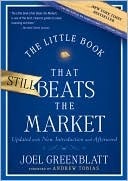More on this book
Community
Kindle Notes & Highlights
That 10 percent return, calculated by dividing the earnings per share for the year by the share price, is known as the earnings yield. We then compared the earnings yield of 10 percent we could receive from an investment in Jason’s business with the 6 percent return we could earn risk free from investing in a 10-year U.S. government bond. We concluded, without too much trouble, that earning 10 percent per year on our investment was better than earning 6 percent. Of course, although that analysis was simple, we identified a bunch of problems.
But beyond price, we might also want to know something about the nature of the business itself. In short, are we buying a good business or a bad business?
if you just stick to buying good companies (ones that have a high return on capital) and to buying those companies only at bargain prices (at prices that give you a high earnings yield), you can end up systematically buying many of the good companies that crazy Mr. Market has decided to literally give away.
Paying a bargain price when you purchase a share in a business is a good thing. One way to do this is to purchase a business that earns more relative to the price you are paying rather than less. In other words, a higher earnings yield is better than a lower one.
2. Buying a share of a good business is better than buying a share of a bad business. One way to do this is to purchase a business that can invest its own money at high rates of return rather than purchasing a business that can only invest at lower ones. In other words, businesses that earn a high return on capital are better than businesses that earn a low return on capital.
3. Combining points 1 and 2, buying good businesses at bargain prices is the secret...
This highlight has been truncated due to consecutive passage length restrictions.


